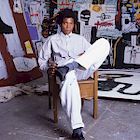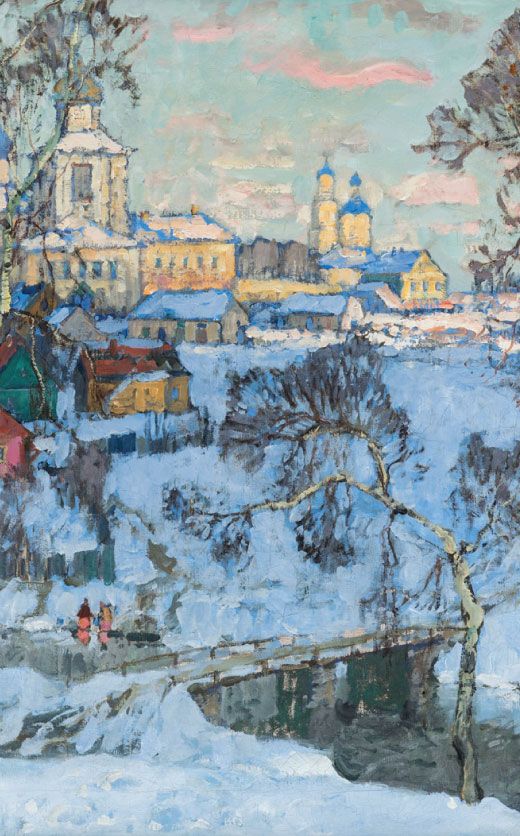Raphael Soyer: The Poetic Realist of Everyday Life
Few artists in 20th-century America captured the quiet dignity of ordinary life quite like Raphael Soyer (1899–1987). A painter, draughtsman, and printmaker, Soyer believed deeply that “if art is to survive, it must describe and express people, their lives and times. It must communicate.” His lifelong dedication to portraying humanity with honesty and compassion made him one of the foremost figures of American social realism.
Soyer was born in Borisoglebsk, Russia, in 1899, and immigrated to the United States with his family in 1912. The Soyers settled in Brooklyn, where Raphael and his brothers were encouraged to draw by their father, a teacher of Hebrew literature and history. That early encouragement, coupled with their immigrant experience, helped shape Raphael’s profound empathy for working people, a theme that remained central to his art throughout his life.

Raphael Soyer, © Peter A. Juley & Son Collection, Smithsonian American Art Museum J0111205
After studying at Cooper Union, the National Academy of Design, and the Art Students League, Soyer began to focus on scenes of daily life in New York’s East Side. In the 1920s and 1930s, he painted and sketched the city’s shop girls, laborers, and unemployed men, creating a deeply human record of an era marked by economic hardship and social change. While many of his contemporaries used art as a tool of protest, Soyer’s approach was quieter and more introspective. His work conveyed the emotional and psychological weight of modern life without overt political messaging.
During the Great Depression, Soyer’s paintings of the city’s marginalized figures stood out for their tenderness rather than their outrage. He viewed his subjects not as symbols of struggle but as individuals—each with their own dignity, vulnerability, and resilience. As Virginia M. Mecklenburg noted in Modern American Realism: The Sara Roby Foundation Collection, Soyer’s work offered “a poignant vision of the human condition” rather than the rhetoric of protest.
Throughout his career, Soyer remained devoted to the human figure. Whether painting a self-portrait, a model in his studio, or friends in casual moments, his art emphasized emotional intimacy and authenticity. His brushwork, often loose yet precise, conveyed both immediacy and empathy. Even in his later works, his subjects are rendered with a quiet respect that invites viewers to look closely, to really see the person before them.
Soyer’s artistic philosophy stood in contrast to the rise of abstract expressionism in the mid-20th century. While many artists turned to abstraction, Soyer continued to paint representationally, convinced that realism still had the power to move and connect people. In doing so, he became a bridge between the early social realists of the 1930s and later figurative painters who sought to reassert the human presence in art.
Two works by Raphael Soyer will be featured in Doyle’s upcoming auction, Doyle at Home® & The Collection of Anne Eisenhower, taking place on October 28, 2025, at 9:00 AM CDT. The sale offers collectors a rare opportunity to acquire works by an artist whose legacy lies not in grandeur or abstraction, but in his ability to find poetry in everyday life.
Auction Highlights:
Seated Girl in a Floral Dress - Lot 74
.jpeg)
Estimate: $3,000 - $5,000
Two Friends - Lot 75
.jpeg)
Estimate: $2,500 - $4,500
Through his art, Raphael Soyer invites us to pause and observe, to recognize the beauty, emotion, and complexity in the lives of ordinary people. In a world that often celebrates spectacle, Soyer reminds us that true art endures in its humanity.
View the full catalog and register on Bidsquare.com.
- Billings Winter Design 2025: A Celebration of Modern Mastery Across Eras
- The Ultimate Holiday Gift Guide: Luxe Finds From Bidsquare’s Finest Auctions
- Fine & Antique Jewelry Sale: A Curated Journey Through Craftsmanship & Design
- Upcoming Auction Spotlight: Doyle’s Fine Art: 19th Century & Early Modernism
- Entertain with Style This Holiday Season: Highlights from Doyle’s December 8 Auction
- Six Standout Lots from Newel’s Fine Jewelry, Timepieces & Luxury Handbags Sale
- Artist Spotlight: Roy Lichtenstein, Pop Art’s Master of Bold Lines & Bigger Ideas
- Discover the Warmth of Pennsylvania Impressionism: Nye & Co.’s Dec. 3 Auction Features the Collection of Nancy & Robert Stein
- Inspired by Cape Cod: The Artists Who Paint Its Light, History, and Character
- Modern Masterworks: A Celebration of Midcentury & Contemporary Design



 EUR
EUR CAD
CAD AUD
AUD GBP
GBP MXN
MXN HKD
HKD CNY
CNY MYR
MYR SEK
SEK SGD
SGD CHF
CHF THB
THB












